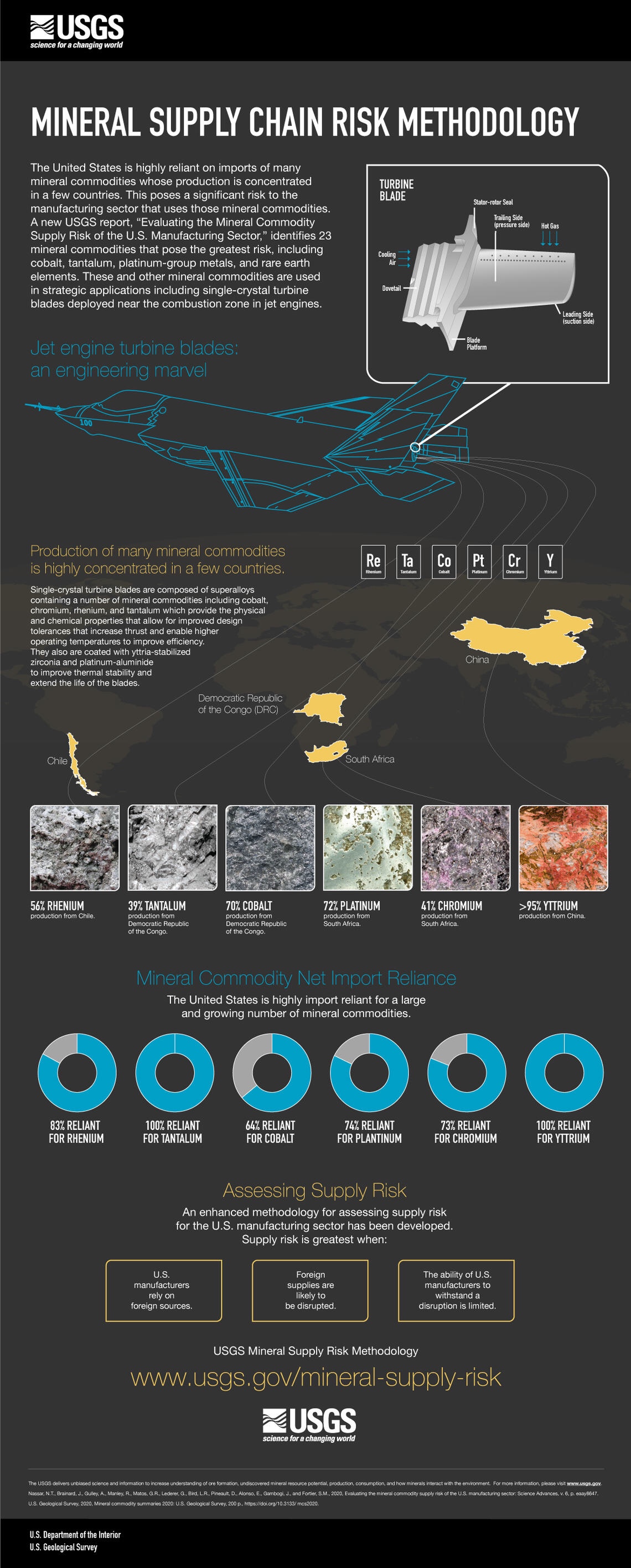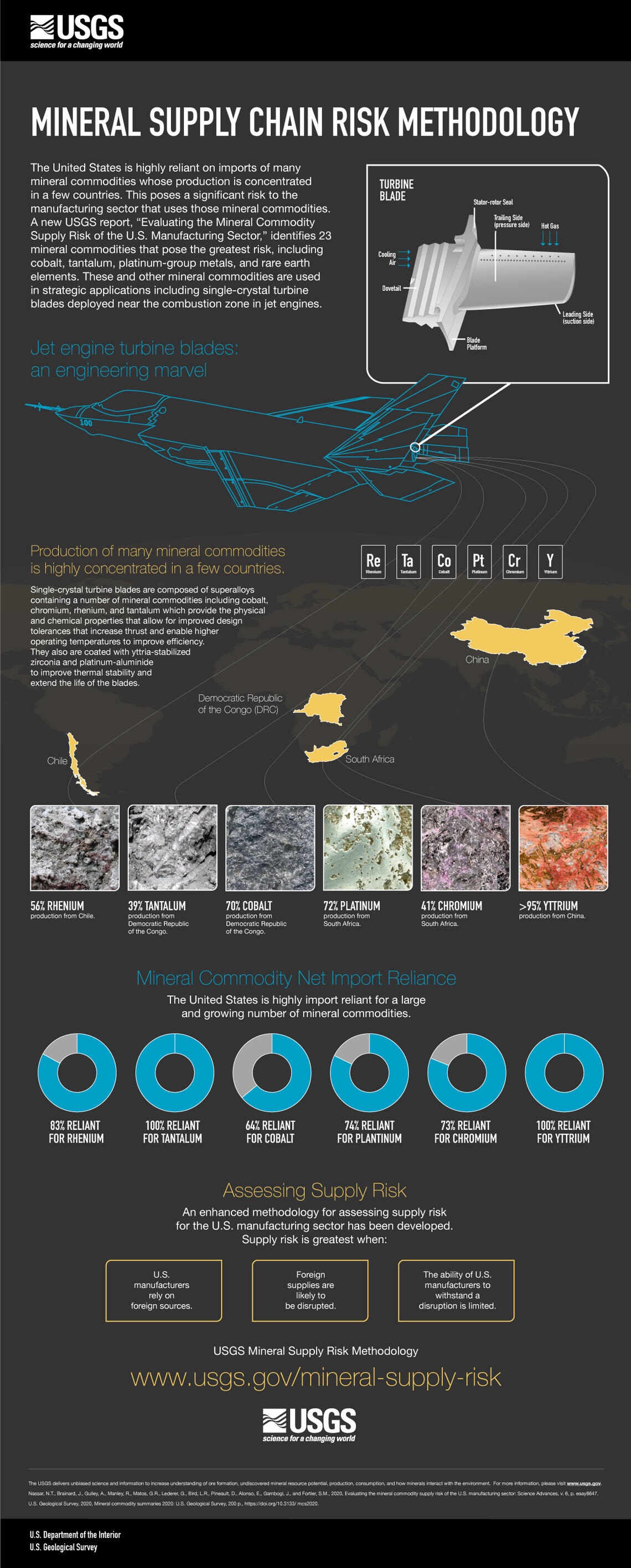A new risk tool developed by researchers at the U.S. Geological Survey and its partners identifies 23 metals and minerals relevant to U.S. manufacturing that are at greatest risk to supply disruption.

The methodology, entitled “Evaluating the Mineral Commodity Supply Risk of the U.S. Manufacturing Sector” and published in Science Advances was developed to help meet the goals outlined in the 2019 interagency report entitled “A Federal Strategy to Ensure a Reliable Supply of Critical Minerals,” which was released pursuant to President Trump’s Executive Order 13817 of 2018.
The report evaluated the global supply of and U.S. demand for 52 mineral commodities for the years 2007 to 2016.
Researchers determined that “[t]he supply risk of mineral commodities to U.S. manufacturers is greatest under the following three circumstances: U.S. manufacturers rely primarily on foreign countries for the commodities, the countries in question might be unable or unwilling to continue to supply U.S. manufacturers with the minerals; and U.S. manufacturers are less able to handle a price shock or from a disruption in supply.”
The subset of 23 metals and minerals identified in the methodology as posing the greatest supply risk for the U.S. manufacturing sector includes some rare earth elements, cobalt, niobium and tungsten.
The authors of the report point out that supply risk (SR) is “dynamic, increasing and decreasing with changing global market conditions that are specific to each commodity and industry” and that “[a] commodity with supply that is not at high risk today may become at high risk in the future as production and consumption patterns shift.” However, they found that “significant changes in SR over short periods of time are rare,” and while “SR scores can and do change markedly, the subset of commodities with the highest SR has been largely consistent throughout the time period examined.”
With risk arising at the “confluence of the three factors: hazard, exposure and vulnerability,”supply risk can be achieved by reducing any of these three. The authors point to the 2019 interagency report spearheaded by the U.S. Department of Commerce which effectively called for an “all-of-the-above“ approach of diversifying supply, fostering trade relations with strong allies, developing domestic primary and secondary resources and capabilities, recycling and substitution, as well as stockpiling to reduce exposure to supply disruptions.
They conclude that “[t]he degree to which any one of these strategies can be successful at minimizing the risk to an acceptable level depends on the specific commodity and the industries involved, as well as what is deemed to be an acceptable level of risk.”
Here’s USGS’s full-size infographic to accompany the report:





